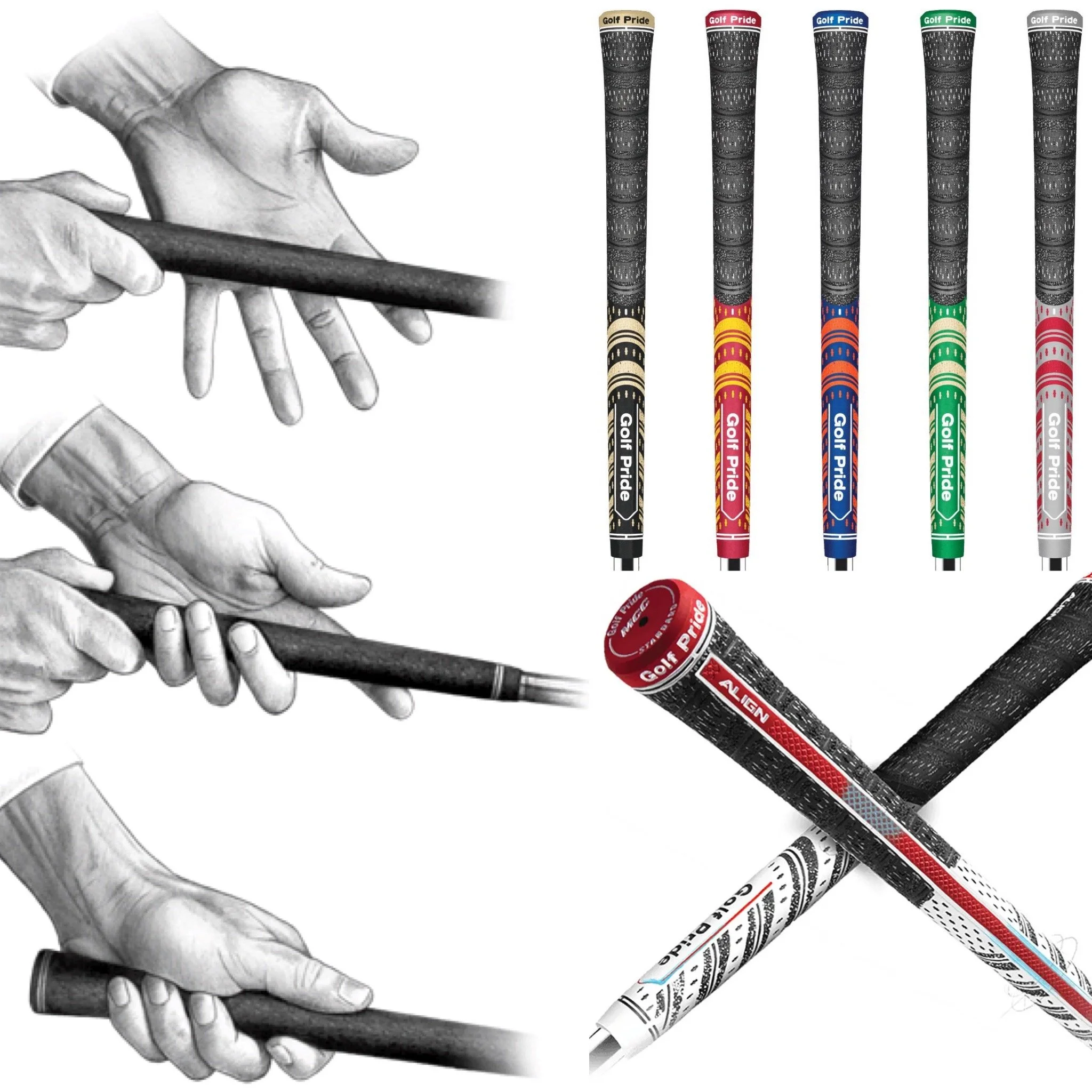Grip can be a very important factor then many overlook. Below are some things to think about to improve your game.
The grip is the only contact you have with the club. Make sure your grips are looked after by cleaning them or by getting new grips. A worn grip can result in a few potential limitations:
Reduce clubhead speed (Reduce distance)
Increase grip tension (reduce feel)
Reduce clubhead rotation (potential increase in slice ball flight)
Decrease consistency of strike
There are many different grip models. Here is some information to consider when choosing what grip to use.
Rubber grips such as a tour velvet (most popular grip on Tour). This grips is soft in texture giving more feel, reducing vibration up the club but is not as good as other in wet conditions or those with sweaty hands.
Half cord/half rubber such as a multi-compound grip (multicoloured grip such as red and black). This grip is popular for being a mix where the top half is cord providing a firmer feel and more grip in wet conditions under the glove hand, and the softer texture under the non-glove hand.
Full cord such as the Z-cord grip. This grip is most popular for those who play in all weather conditions, have sweaty hands or want a firmer feel when they grip the club. The dampening of vibration up the club is limited with this grip type but the grip has a tendency to last the longest (less susceptible to wear) than other grips.
How do your hands grip the club?
There are three different types of functional grips (Full Swing):
The overlap grip - Also called the ‘Vardon Grip’. This grip is where the trail hand pinky finger overlaps the lead hands index finger. This grip is know for being a neutral grip with no bias towards hitting a fade or draw.
The interlock grip - The grip of use by Tiger Woods. This grip is where the trail hand pinky finger interlocks with the lead hand index finger. This grip is popular as many feel more connected when using it. This grip has more of a draw bias if interlock is deep but can be different on a case by case basis.
The 10-finger grip - Also called the ‘Baseball grip’. This grip is where all eight fingers are connected but not overlapping or interlocking. This grip is popular for beginner golfers as the grip can be difficult to grasp straight away. Players have a tendency to have thumbs down the centre of the grip which tends to promote a weak trail hand grip, promoting a fade bias.
With all grip types, it is recommended to have the grip in your fingers and not in the palm (lifeline) of the hand. The lead hand thumb will be on the opposite half of the top of the grip (e.g right handed golfers left hand thumb will be on the right half of the top of the grip).
Strength of Grip
The strength of the grip can affect the functionality of the grip, ball flight and wrist movement.
Neutral grip - A neutral grip is where the players lead hand has 2-3 knuckles showing when addressing the club (Your head should not move or tilt when looking down at your grip to check its strength). Providing you have a neutral lead hand, the player will have a tendency to have a flat lead wrist at the top of the backswing. If this happens, this means your clubface is neutral (square) at the top of the backswing giving greater chance of hitting a neutral (straight) ball flight. For the trail hand to be neutral, the player will have the V-shape (V-shape occurs between the trail thumb and index finger) points towards the trail shoulder with the trail forearm in a relaxed position.
This set up promotes a straight ball flight providing other variables in the swing such as wrists, shoulders and lower body movement match up.
Strong grip - A strong grip is where the players lead hand has 3-4 knuckles showing when addressing the club. If the player has a stronger lead hand, the player will have a tendency to have a cupped lead wrist at the top of the backswing to get the clubface in a square position. For the trail hand to be strong, the player will have the V-shape point behind the trail shoulder with the trail forearm in a relaxed position. This set up promotes a more draw bias ball flight providing other variables in the swing such as wrists, shoulders and lower body movement match up.
Having one hand or both hands in a stronger position can help a golfer who has a tendency to slice the golf ball to reduce the curvature and hit the ball straighter.
Weak Grip - A weak grip is where the players lead hand has zero or 1 knuckle showing when addressing the club. The lead hand thumb will typically be on the middle of the grip. If the player has a weaker lead hand, the player will have a tendency to have a bowed/flexed lead wrist at the top of the backswing to get the clubface in a square position. For the trail hand to be weak, the player will have the V-shape point towards the sternum or lead shoulder. The trail forearm will tend to be above the lead forearm at address in a straight/more tense orientation. This set up promotes a more fade bias ball flight, promotes a more out-to-in swing path as many tend to have shoulders open to the target as a result.
Having one hand or both hands in a weaker position can help a golfer who has a tendency to hook the golf ball to reduce the curvature and hit the ball straighter. It can also be a major cause in promoting a slice ball flight.
* To note, many players can have a combination between lead and trail hands of neutral/strong/weak grip conditions. Players must note that one grip may not be correct for everyone but must match up to their swing characteristics and body movement. If you believe this could be an issue, please talk to your PGA Professional.
*Putter grip is different and will be covered in the future*
Any questions, please speak to any of the THSG Team
Thanks
Zach









